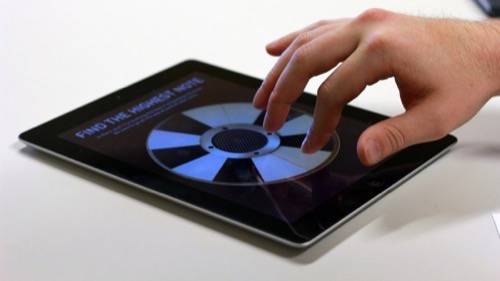
A museum under construction is an awesome scene. It’s like peeking backstage before the premiere of Broadway play, seeing the outer experience taking shape.
The Exploratorium – a unique museum of science, art and human perception – is still two months away from its grand reopening. The lower floor is strewn with half-built exhibits and criss-crossed with caution tape. The upstairs is a buzzing office full of people planning for the big day and beyond. This vast new space on Pier 15 in San Francisco opens to the public on April 17.
But on Monday the museum released Sound Uncovered, its second free iPad app, which the creators showed me during a visit to the unfinished museum. As I explored the app’s exhibits, the tablet disappeared in my hands. When you launch this app, you’re in the museum, no matter where you are.
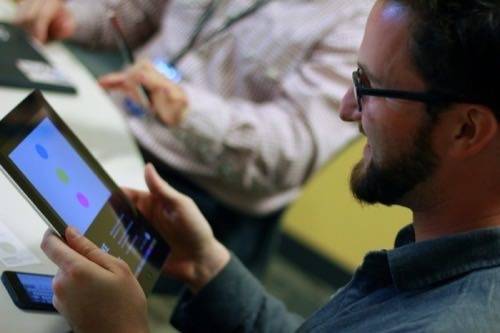
Everywhere Is A Laboratory
The design of physical Exploratoreum starts with the goal of creating an experience and builds up from there. An iPad is just as good as a room in the museum if it’s the right place to focus the experience of an exhibit. “What makes the Exploratorium a unique place is that it’s the combination of a museum, a laboratory, and a developmental studio,” says Rob Semper, executive associate director of the museum.
Semper is a physicist whose tenure at the Exploratorium goes back to designing some of its original exhibits with founder Frank Oppenheimer (also a physicist, who worked on the Manhattan Project with his older brother Robert Oppenheimer). Semper took a little time off from the Exploratorium to run the collaboration between Apple and Lucasfilm. Now he’s back creating museum exhibits again, both in San Francisco and at partner museums around the world.
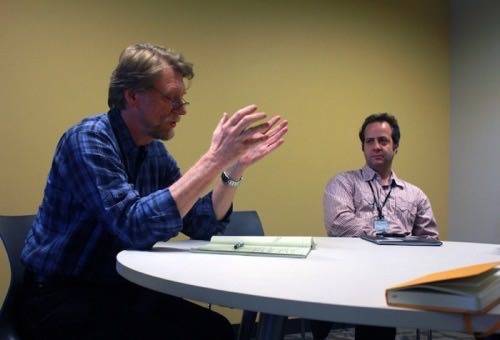
Extending its exhibit design to the iPad is a natural move for the Exploratorium. This museum came online in 1993, making its website among the first 600 in the world. The Exploratorium is like a laboratory for turning things into laboratories. In the same way it is turning its new U-shaped port building and the walkways and docks outside into a delightful maze of science experiments, it can turn flat, pixellated spaces into exhibits as well. And on the iPad, these experiments come to life, gaining the inputs of touch, movement, light and sound.
It’s All About Perception
The two Exploratorium iPad apps so far are both “buffet-style” collections of short, multi-sensory exhibits. You can select from a table of contents or swipe through like a magazine. The first was Color Uncovered, which uses properties of the tablet’s display to demonstrate properties of light. The new app, Sound Uncovered, uses both the speakers and microphones, as well as text and video explanations, to show off some of the surprisingly bizarre properties of sound.
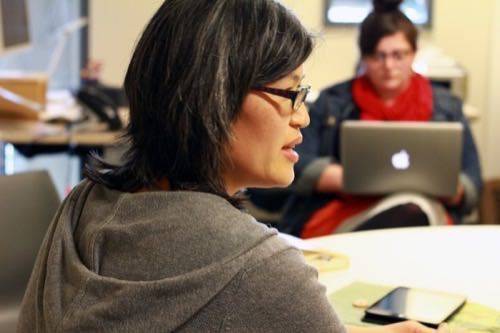
“Perception is a strong subject for us,” says Sound Uncovered project director Jean Cheng. Designing a museum exhibit at the level of user experience comes right down to perception. “This app is about sound, but it’s really about you.” By causing you to notice weird things about your perception that you usually take for granted, the Exploratorium forces you to think more critically about your environment, and it does so purely through fun.
I’m not going to spoil the illusions for you. If you have access to an iPad, you should download Sound Uncovered for free and try it yourself. Right now.
But I will tell you about my favorites:
I love “Find the Highest Note,” which presents a circular organ and demonstrates the mind-bending auditory Möbius strip known as the Shepard scale. As you move upward and downward in base pitch, the eerie Shepard tone’s partials replace each other at the top and bottom range of hearing. As a result, even though you’re moving up or down in pitch, it ultimately never sounds like it’s getting higher or lower. It’s the auditory version of the barber-pole illusion, where the corkscrewing shape seems to move upward or downward forever while remaining in the same place.
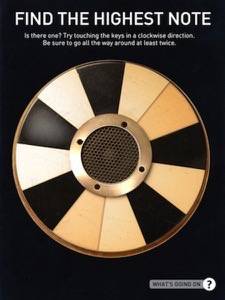
What’s also cool about this exhibit in the app is that it doubles as a musical instrument.
Another great social exhibit is the “How Old Are Your Ears?” test, which lets you slide down from an inaudibly high frequency into the ranges that humans naturally lose the ability to hear over time. The younger people in the room will start to hear an ear-splitting whine, but the elders won’t hear a thing until lower down.
As we ran through the illusions at the museum, the construction crews periodically tested the fire alarm in the building, which pierced through our conversation. It was uncomfortable for a second, disrupting this carefully arranged social situation, but then we realized the building itself was demonstrating the very kinds of sensory and cognitive tricks we were playing with on the iPad.
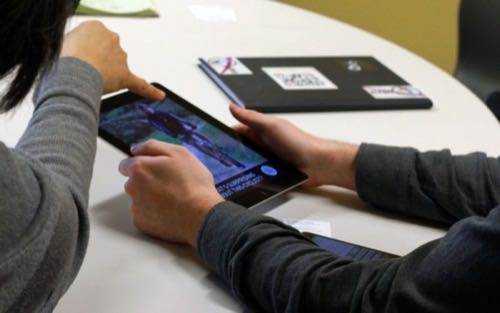
Simply Social
The Exploratorium is not afraid to take risks with its apps. One exercise in Color Uncovered asks the user — with plenty of caution — to put a drop of water on the screen, which creates a magnifying bubble in which one can clearly see how pixels work. The team laughs about some of the App Store reviews they got from people who didn’t handle that part carefully.
But the apps are simple and magazine-like, going out of their way not to overwhelm people less used to figuring out how iPad apps work. “We don’t want to further mystify people with this tech,” director of online engagement Lowell Robinson says. “Frank [Oppenheimer]’s dream was to demystify people about how the world works.” Accordingly, these apps are not about deep-down, immersive virtual experiences. “We’re trying to give you physical ways to test,” says Cheng. The apps ask you to try things, try them on others, and pass the tablet around.
The Exploratorium apps are social, but not in the Facebook way. “Social in the old-fashioned sense where you’re sitting next to somebody,” Robinson says. We had a good laugh about that.
Sound Uncovered for iPad is available for free on the iTunes App Store.
Photos by Amy Widdowson.





















